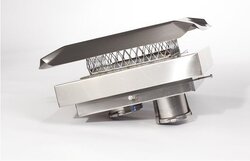I would like a piece of this bet. It is VERY common whether pellet or wood for a large masonry chimney to be a giant heat sponge. Install a block off plate and keep the heated air in the room.
This chimney is huge. It has 3 flus through it. 2 are permanently sealed off at the top and the stove vents through the 3rd. The chimney is roughly 35ft tall and roughly 6 ft by 4 ft rectangular.
Do you think the block off plate alone would be sufficient or only in addition to the OAK?
Thank you






 5000 square feet and little or no insulation? You have got to be kidding! I can't believe others here are actually going along with this! How many btu's is your furnace(s)? Who told you that the stove would heat your house? Get your money back ASAP.
5000 square feet and little or no insulation? You have got to be kidding! I can't believe others here are actually going along with this! How many btu's is your furnace(s)? Who told you that the stove would heat your house? Get your money back ASAP.